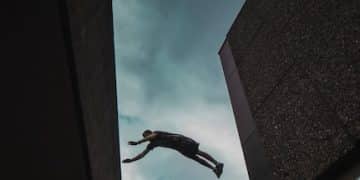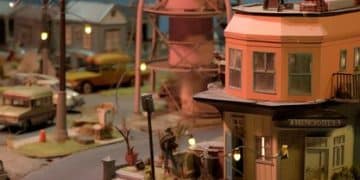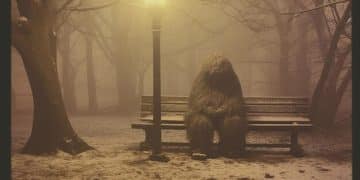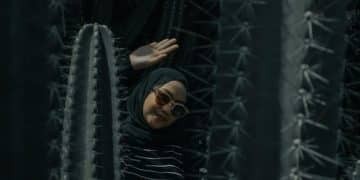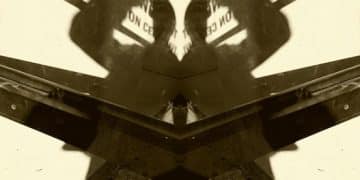The Evolution of Special Effects: A Visual Journey Through Forgotten Classics
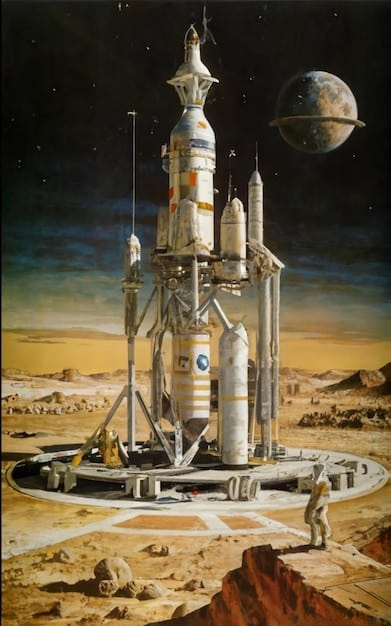
The evolution of special effects in forgotten classics showcases a remarkable journey from practical ingenuity to digital mastery, transforming storytelling and visual experiences in cinema history.
Delve into the captivating world of cinematic illusion as we explore the evolution of special effects: a visual journey through ‘Forgotten Classics’, revealing the innovative techniques that brought fantasy to life on the silver screen.
From Matte Paintings to CGI: Tracing the Roots
Special effects have been an integral part of filmmaking since its inception. Early cinematic masterpieces relied heavily on practical techniques, setting the stage for the digital revolution that would later redefine the industry.
The Art of Matte Paintings
Matte paintings were a staple in early Hollywood, allowing filmmakers to create elaborate sets and landscapes that didn’t exist in reality. Skilled artists would paint scenes on glass panels, which were then composited with live-action footage.
Miniatures and Models
The use of miniatures provided a cost-effective way to depict large-scale environments and objects. Painstakingly crafted models were often used to simulate cities, spaceships, and other fantastical elements.
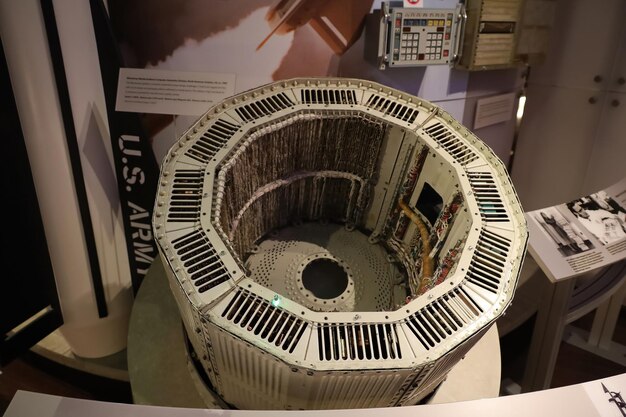
Here are some key elements:
- Forrest J Ackerman: A true visionary, Forry was a huge influence in the sci-fi and special effects community.
- Early techniques: Explore the pioneering techniques used in silent films to trick the eye.
- Optical printers: Discover how optical printers revolutionized visual effects compositing.
- Norman Dawn: Dawn was an expert in glass paintings, allowing filmmakers to create complex illusions.
These practical methods established the groundwork for more advanced approaches, underscoring the role of artistry in creating visual effects. From painted landscapes to detailed miniatures, these techniques ignited the imagination of audiences and redefined what was possible on screen.
Stop-Motion Animation: Giving Life to the Unreal
Stop-motion animation is a technique where objects are physically manipulated in small increments between individually photographed frames, creating the illusion of movement when the series of frames is played as a continuous sequence.
Ray Harryhausen: The Master of Dynamation
Ray Harryhausen was a pioneer in stop-motion animation, known for his work in classic fantasy films like “Jason and the Argonauts” and “The 7th Voyage of Sinbad.” His unique technique, called Dynamation, seamlessly integrated stop-motion creatures with live-action scenes.
The Enduring Appeal of Stop-Motion
Despite advancements in CGI, stop-motion animation retains a unique charm and aesthetic. The tangible, handcrafted quality appeals to audiences who appreciate the artistry and effort involved in creating these sequences.
Consider these factors for success:
- Artistic creativity: Realize the visual fantasy brought about by stop-motion animation.
- Jason and the Argonauts: Harryhausen’s skeletons display the effectiveness of stop-motion techniques.
- The puppetoon: It was used in advertising and short films, and developed by George Pal in the 1930s.
- Tactile qualities: Stop-motion’s qualities attract many movie fans.
Harryhausen’s Dynamation technique blended stop-motion with live-action, resulting in groundbreaking visual effects that captivated audiences. The method combines artistic and technical expertise, leaving an impressive legacy in classic filmmaking.
The Magic of Practical Effects: Before Digital Domination
Before the advent of CGI, practical effects were the backbone of cinematic illusions. These techniques required creativity, precision, and a collaborative effort from filmmakers, makeup artists, and special effects technicians.
Makeup and Prosthetics
Transforming actors into fantastical creatures and characters relied heavily on makeup and prosthetics. Skilled makeup artists could create realistic wounds, monstrous features, and aging effects using latex, adhesives, and other materials.
In-Camera Effects
In-camera effects involved manipulating the camera and film during shooting to create visual illusions. Techniques like forced perspective, slow motion, and time-lapse photography were used to enhance the storytelling.
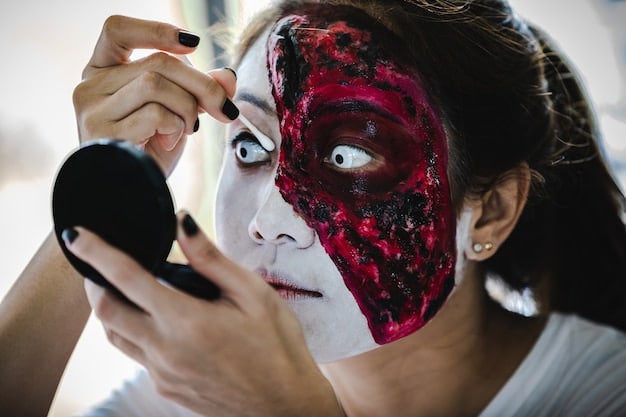
Some points to consider:
- Lon Chaney: The man of a thousand faces relied on a wide arsenal of techniques to metamorphose his appearance.
- Dick Smith: A transformative artist who shocked audiences with amazing makeup effects.
- The Exorcist: Shocking makeup effects demonstrated the art of realism and the art of creating a terrifying environment.
Practical effects formed the backbone of cinematic illusion, requiring a team to work cohesively to create memorable movie moments. Makeup, prosthetics, and in-camera techniques demonstrated the incredible power of practical creativity.
The Rise of Digital Effects: A New Era of Cinema
The introduction of computer-generated imagery (CGI) revolutionized the film industry, offering filmmakers unprecedented control and flexibility in creating visual effects.
CGI: From 2D to 3D
Early CGI was primarily used for simple graphical elements, but as technology advanced, filmmakers began incorporating complex 3D models and animations into their films. This allowed them to create realistic environments, creatures, and action sequences.
The Impact on Storytelling
Digital effects have expanded the possibilities for storytelling, enabling filmmakers to bring fantastical worlds and characters to life in ways that were previously unimaginable. However, the overuse of CGI has also drawn criticism, with some arguing that it can detract from the emotional impact and realism of a film.
Some highlights of Digital Effects:
- Jurassic Park: CGI dinosaurs integrate seamlessly into live-action settings.
- Digital Compositing: Digital compositing puts multiple elements of a scene together.
- Motion Capture Technology: This technique enables filmmakers to record the movements of actors and transfer them onto digital characters.
Jurassic Park exemplified the ability of CGI to immerse the audience in previously unexplored visual environments. Advanced digital effects techniques have changed cinematic storytelling, allowing filmmakers to create breathtaking worlds.
Blending the Old and the New: The Hybrid Approach
In recent years, there has been a growing appreciation for the combination of practical and digital effects. This hybrid approach seeks to leverage the strengths of both techniques, resulting in visually stunning and emotionally resonant films.
The Benefits of Hybrid Effects
Combining practical effects with CGI can enhance realism and create a more tangible feel for the audience. Practical effects provide a physical presence on set, while CGI can be used to enhance and extend these elements.
Case Studies: Where Practical and Digital Meet
Films like “Mad Max: Fury Road” and “Dunkirk” have been praised for their effective use of hybrid effects. These films relied heavily on practical stunts and environments, with CGI used sparingly to augment the action and create seamless transitions.
Some advantages worth considering:
- Cost-effectiveness: By strategically combining practical and digital techniques, filmmakers can achieve spectacular results.
- The Lord of the Rings trilogy: These films have combined miniatures and CGI, resulting in believable environments and characters, helping secure the project’s overall success.
- Filmmaker Empowerment: Hybrid effects can help enhance realism.
By employing a hybrid effects approach, filmmakers maintain a tangible quality on the screen and can still deliver visually impressive experiences. Combining the new and the old makes movies look incredible.
Restoring and Preserving Forgotten Classics: A Digital Renaissance
Many forgotten classics, once limited by the technology of their time, are now undergoing digital restoration, breathing new life into these cinematic treasures. This process involves cleaning and scanning the original film elements, removing scratches and blemishes, and enhancing the colors and details.
The Role of Digital Tools
Digital tools have made it possible to restore classic films to their original glory, or even enhance them beyond what was possible during initial production. This ensures that these films can be enjoyed by future generations.
Showcasing the Artistry of the Past
By restoring forgotten classics, we can appreciate the artistry and ingenuity of the filmmakers who pioneered special effects techniques. It’s a way of honoring their legacy and preserving cinematic history.
Here are a handful of classics now revived:
- Metropolis: This visionary masterpiece showcases early special effects. It was originally released in 1927 and featured groundbreaking visual effects for its time.
- A Trip to the Moon: Known for its surreal imagery, audiences have a lot to be thankful for in this silent film.
- The Gold Rush: Chaplin’s comic timing shines along with clever physical gags.
As film restoration evolves through digital innovation, classics are revitalized for the present era in captivating fidelity. Special effects can be remastered and reborn, allowing filmmakers to preserve cinematic heritage.
The Future of Special Effects: What Lies Ahead?
The future of special effects is exciting, with emerging technologies like artificial intelligence (AI) and virtual reality (VR) poised to transform the way we experience cinema. AI can automate certain tasks in visual effects production, while VR can create immersive environments that blur the lines between reality and fiction.
AI and VR: The Next Frontier
AI has the potential to streamline visual effects workflows, automating tasks like rotoscoping, tracking, and compositing. VR can create entirely new cinematic experiences, allowing viewers to step into the world of the film.
The Ever-Evolving Landscape of Cinema
As technology continues to evolve, the boundaries of what’s possible in special effects will continue to expand. The future of cinema is one of endless possibilities, where filmmakers can create increasingly immersive and fantastical experiences for audiences.
What is on the digital horizon?
- Deepfakes: These can be used to modify an actor’s performance.
- Real-time ray tracing: This revolutionizes how effects can be rendered instantly.
- Augmented reality: AR allows viewers to interact with the narrative in real-time.
Technological advancements in special effects are constantly paving the way for new and dynamic cinematic narratives. Embracing these tools is key to immersive storytelling, and VR technologies can help provide a window to new experiences.
| Key Point | Brief Description |
|---|---|
| 🎬 Early Special Effects | Practical techniques like matte paintings and miniatures set the stage. |
| 🧙 Stop-Motion Animation | Ray Harryhausen’s Dynamation technique integrated stop-motion and live-action. |
| 💻 Rise of Digital Effects | CGI revolutionized filmmaking, but it should be balanced with practical effects. |
| ✨ Hybrid Approach | Combining both practical and digital techniques provides the best of both worlds. |
FAQ
▼
Some of the earliest special effects techniques include matte paintings, miniatures, and in-camera effects. Matte paintings were used to create elaborate sets, while miniatures brought landscapes and objects to life.
▼
Ray Harryhausen was a stop-motion animation pioneer known for Dynamation. This technique combined stop-motion creatures with live-action scenes, creating visual masterpieces in films like “Jason and the Argonauts.”
▼
CGI, or computer-generated imagery, revolutionized filmmaking by allowing creators to design virtual landscapes, characters, and action sequences. “Jurassic Park” was one instance of this.
▼
The hybrid approach combines practical and computer-generated effects to create visual impact and tactile feel. “Mad Max: Fury Road” and “Dunkirk” are good examples of what can come from this strategy.
▼
The integration of artificial intelligence and virtual reality seems promising, as AI can help streamline film workflows. As the field progresses, VR technologies will lead cinema to endless, previously unheard of territory.
Conclusion
As we journey through the evolution of special effects in ‘Forgotten Classics,’ we celebrate the ingenious techniques and visionaries who have shaped cinematic history. From the artistry of matte paintings and stop-motion animation to the digital revolution and the promise of AI and VR, the future of visual effects is boundlessly thrilling. Appreciating both the traditional and modern techniques allows cinemagoers to value these stories.
